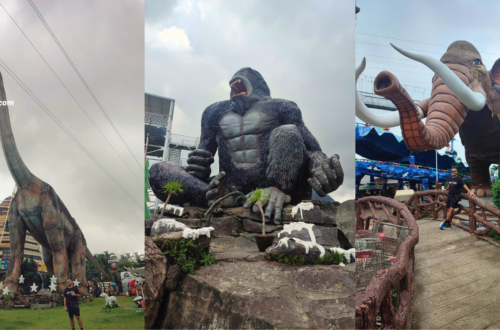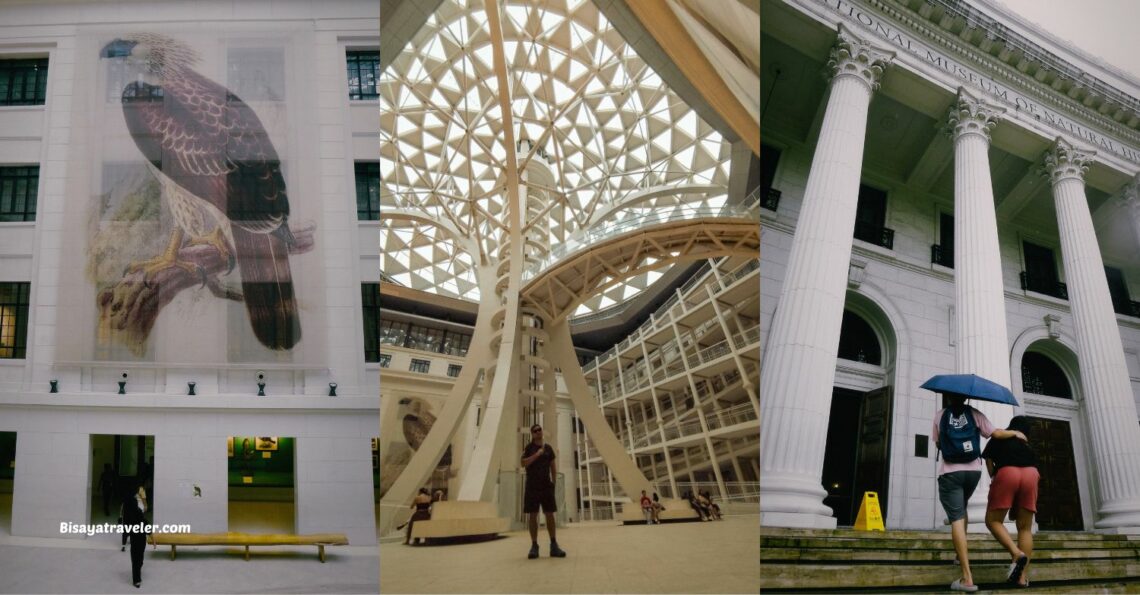
National Museum Of Natural History: The Things We Miss While Scrolling
Most people don’t make it past the first paragraph. You probably won’t either. Or maybe you’ll just stop to look at the photos from the National Museum of Natural History, Philippines.
That’s how we’ve been programmed these days. We are rewired to scroll, pause, swipe, and repeat.
The algorithm decides what matters now. And if it doesn’t flash, move, or shout in under eight seconds, we move on.
That’s why museums feel so irrelevant today.
And it’s not because they’ve failed to evolve and adapt.
They’ve renovated, rebranded, and redesigned entire exhibits just to hold our attention a little longer.
But still, we scroll past them.
Because museums offer depth, silence, slowness, and hard truths.
And those don’t trend.
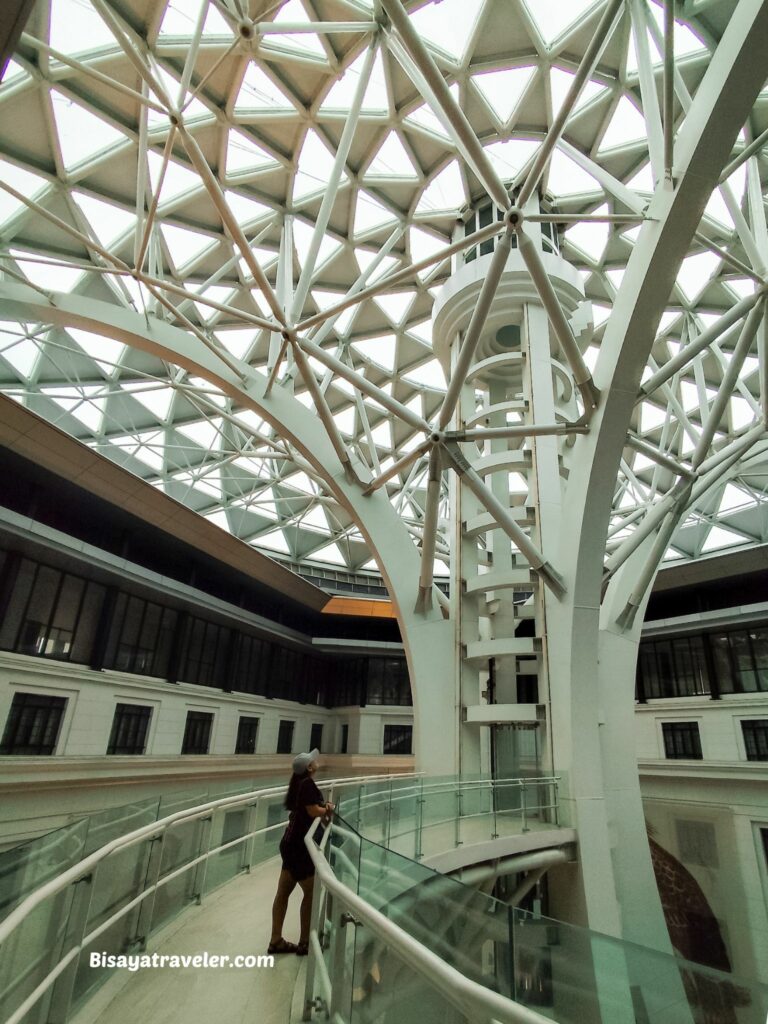
Even so, I never skip a museum when I visit a new city.
And when our original plan to hike KXC fell through, the first alternative that came to mind wasn’t a café or a mall.
It was the National Museum of Natural History.
So, was the National Museum of Natural History, Philippines, worth a visit?
And in an age shaped by screens, algorithms, and speed, do museums still matter?
Exploring the National Museum Of Natural History, Philippines
When I was young, I thought museums were boring.
Naive, I didn’t understand the appeal of looking at rocks, bones, and old dioramas behind glass.
They felt too quiet, slow, and disconnected from everything I thought was exciting.
Back then, I didn’t realize that museums weren’t supposed to entertain me.
They were supposed to make me feel something else: curiosity, context, maybe even responsibility.
Now, with a renewed love for learning and a deeper sense of curiosity, visiting museums has become a mission.
So when our major climb in Luzon got canceled due to a storm, I didn’t even hesitate.
I took the chance to explore the National Museum of Natural History, Philippines.
Entering the museum
When life gives you lemons, you make lemonade.
And on that cloudy, rainy day in Metro Manila, our lemonade was the National Museum Complex.
I wanted to start the day on a high note, and there was no better place to do that than the National Museum of Natural History.
As hikers and nature lovers, this was the perfect pick.

It’s a space dedicated to the wonders of the natural world, right in the heart of the city.
I was even hoping we’d see exhibits of flora and fauna that we’ve seen before on our hikes.
Or maybe it would remind me of unique natural wonders I’ve seen in the Philippines, like the pygmy forest in Mount Hamiguitan.
The moment we walked in, we were immediately struck by the grand interiors and thoughtful design.

Then, we were instructed to leave our backpacks at the baggage counter before fully entering the exhibit halls.
The Tree of Life of the National Museum of Natural History
I was in absolute awe.
With its surreal design, the Tree of Life made me feel like I had stepped into Inception.
This massive, twisting metal structure, encased in a glass dome, looked like it had been pulled straight out of a sci-fi novel.
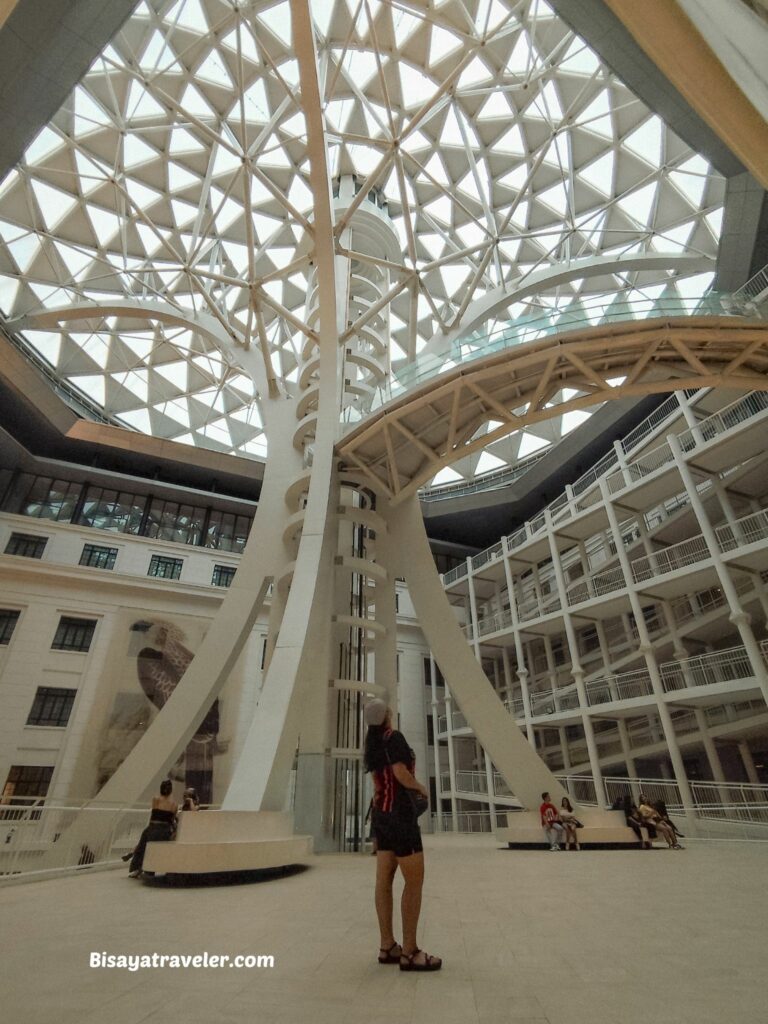
It didn’t feel like a typical museum entrance.
It felt like a portal.
And for a moment, I forgot I was in the middle of Metro Manila.
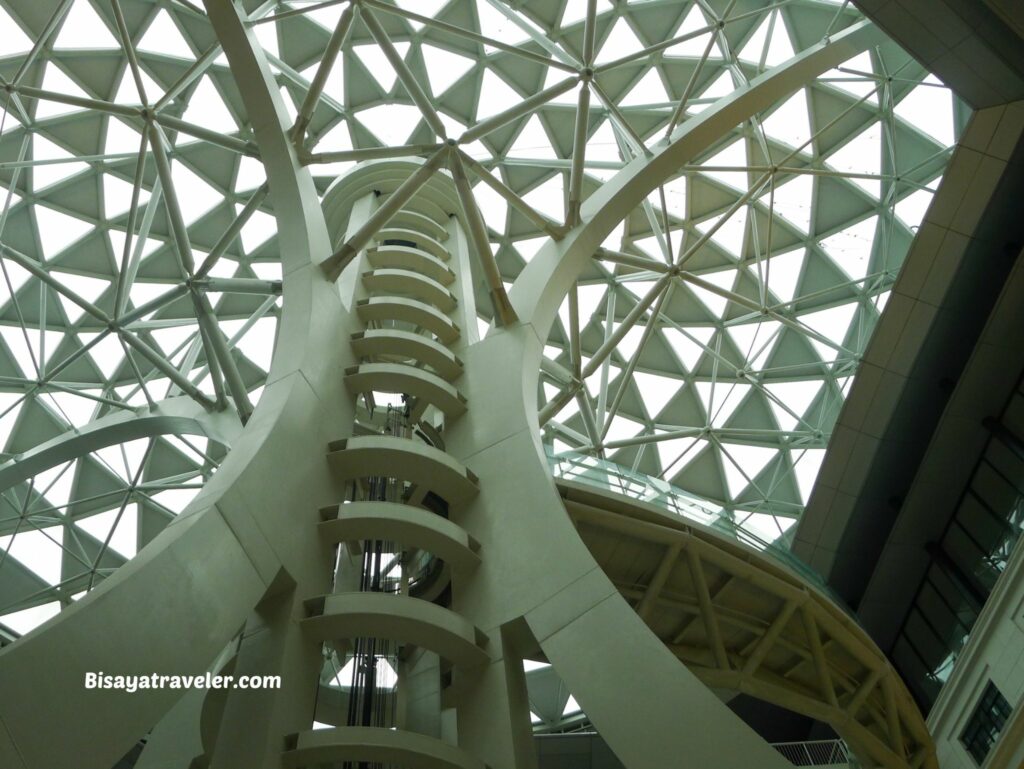
As I’ve said, museums have evolved.
They’ve adapted to attract a generation raised on aesthetics and Instagrammable corners.
The Tree of Life is proof of that.
It’s eye-catching, futuristic, and undeniably photogenic.
But the thing is, this metal-framed glass dome is not just for photos.
It’s a statement, and a symbol that nature and design, as well as science and beauty, can coexist.
And it’s proof that museums still have the power to stop us in our tracks, even in an age where we rarely pause.
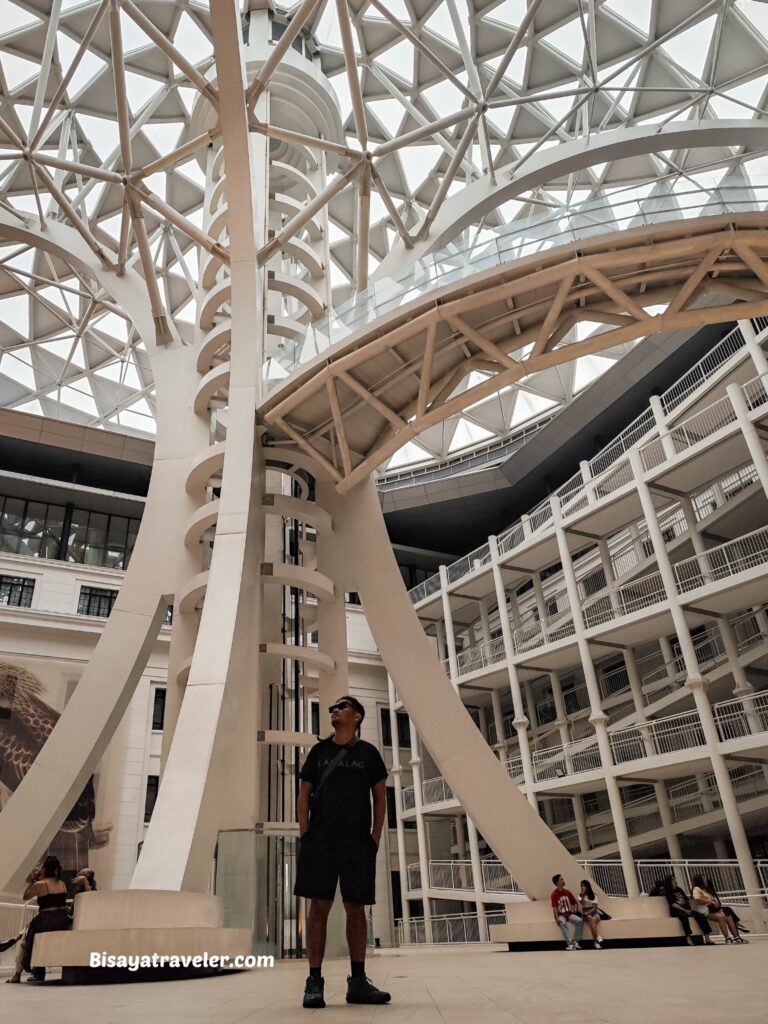
The Tree of Life reminded me of how far museums have come to keep up with the times.
They know we’re drawn to what’s shiny, clean, and cinematic.
And they’ve learned how to meet us there, just long enough to pull us into something deeper.
Because once you’ve looked up and admired the structure, once you’ve taken the photo, you’re already in.
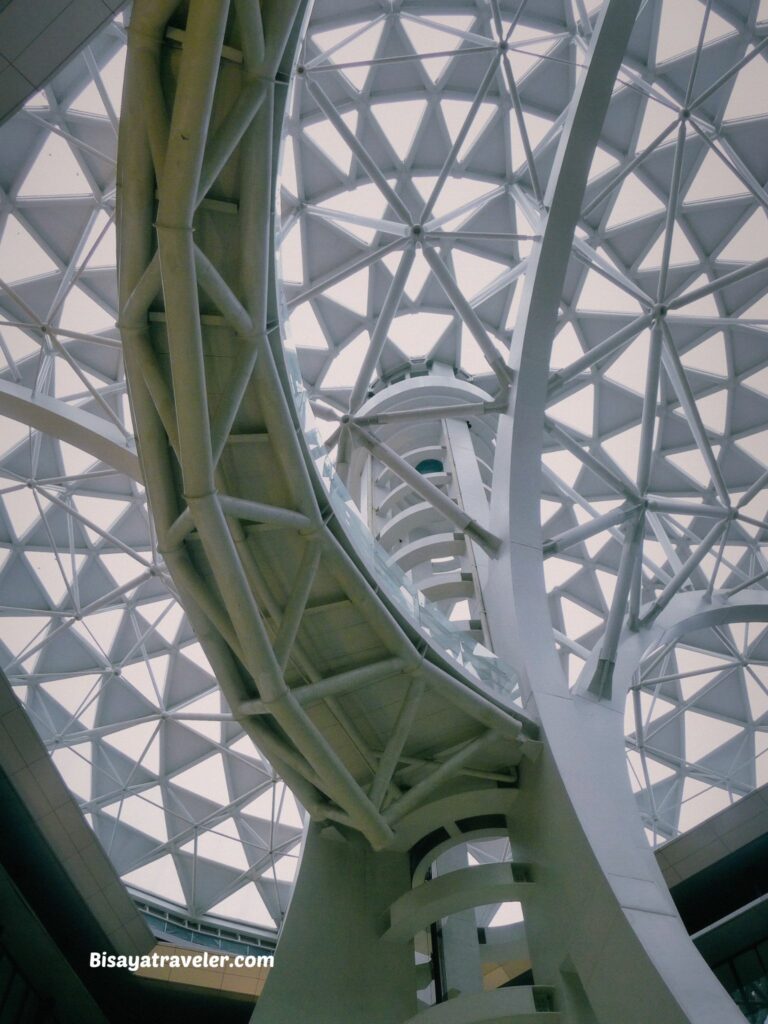
And hopefully, you’ll stick around long enough to learn something real and something that won’t fit in a caption.
That’s the silent power of museums.
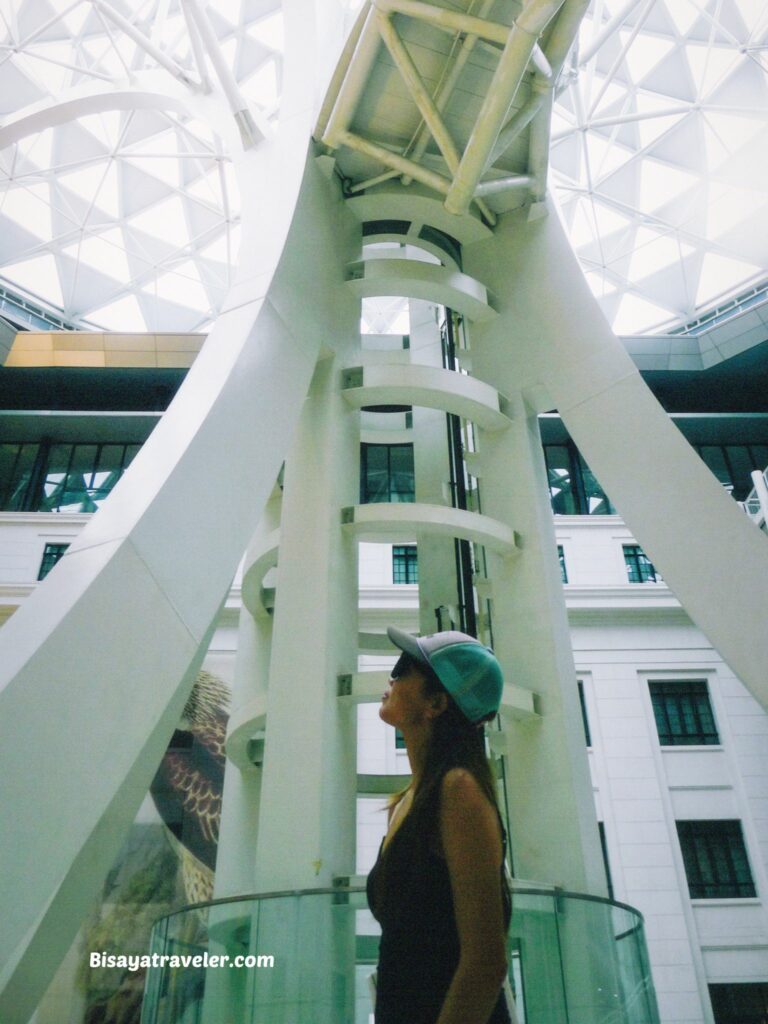
They don’t push.
They don’t compete.
They just wait.
And if you give them a little time, they give you something back.
A moment.
A fresh perspective.
A reason to care.
The ride up
I hate spoilers.
That’s why I don’t read guides, overplan, or watch videos of any place I’m visiting.
I want to be surprised.
And I want the moment to feel real, not rehearsed.
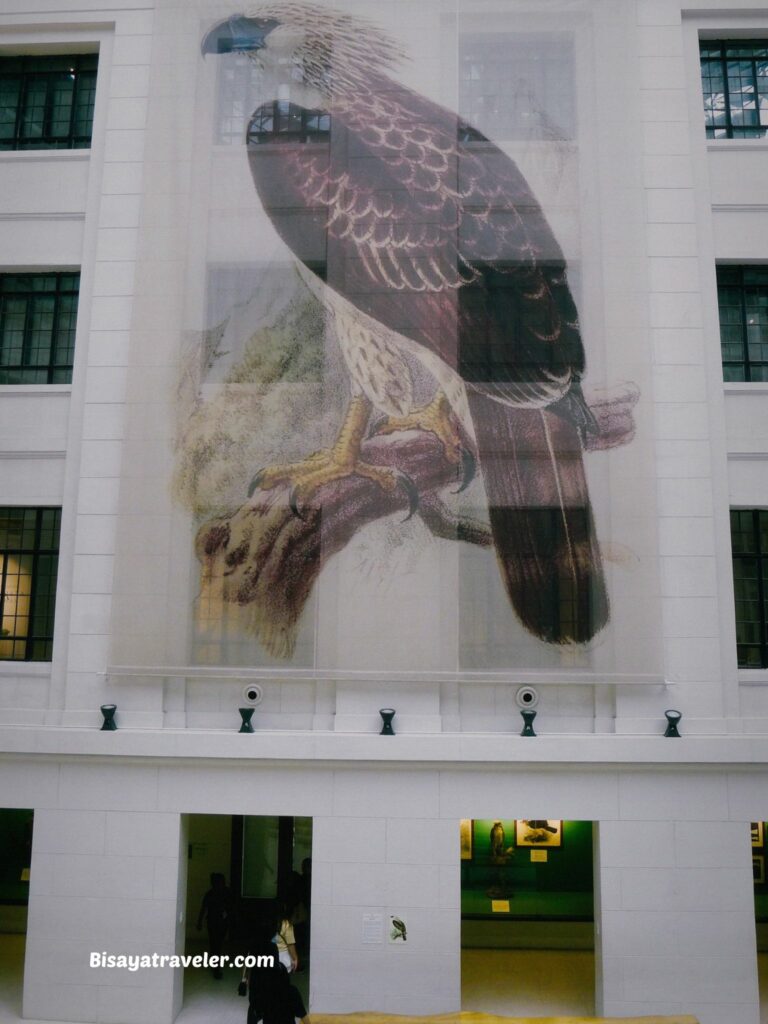
So, after snapping a photo of the stunning Tree of Life, we weren’t sure where to go next.
The National Museum of Natural History is massive, with 12 permanent galleries showcasing the rich geological and biological diversity of the Philippines.
Curious, I wandered around until I noticed what looked like a small, glass-walled cell.
There was a woman inside, seated quietly.
It took me a second to realize it was the elevator.
It looked sleek, futuristic, and almost hidden in plain sight.
So, we went straight to the elevator and let curiosity take the lead.
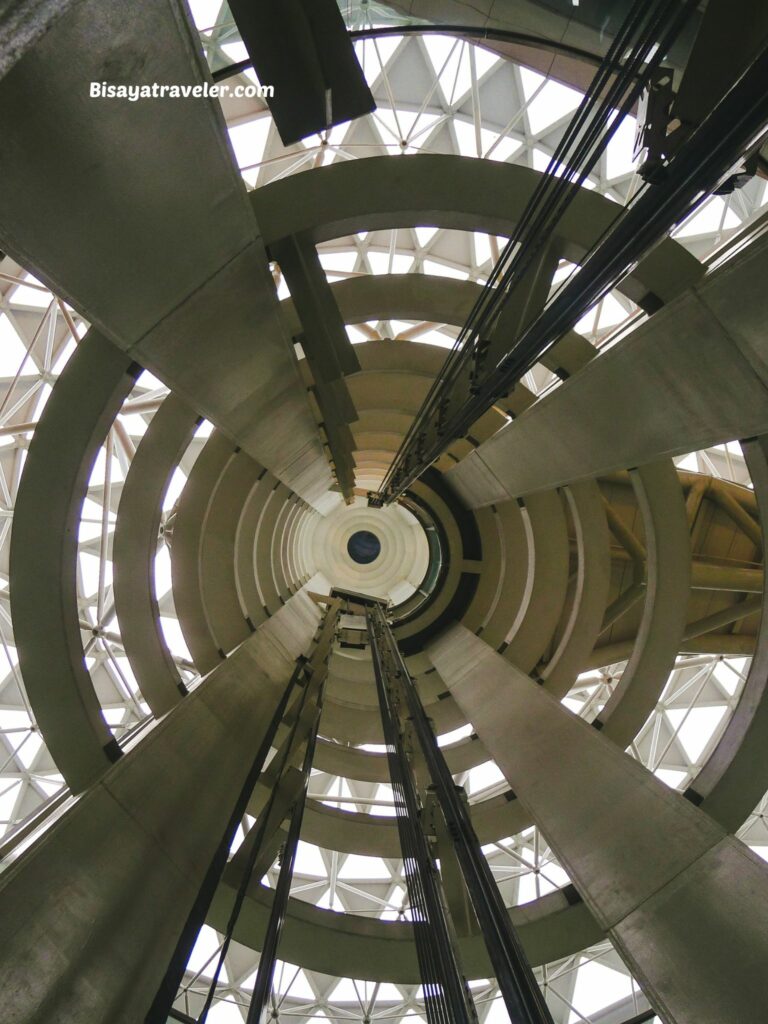
We weren’t sure where this ride would take us.
But guess what?
There’s something oddly satisfying about not knowing what’s next, especially in a world that constantly tells you what to expect.
The 5th Floor of the National Museum Of Natural History
After the short elevator ride, we began exploring the galleries of the National Museum of Natural History, Philippines.
There’s something powerful about being surrounded by fossils, preserved creatures, and stories from a time long before you existed.
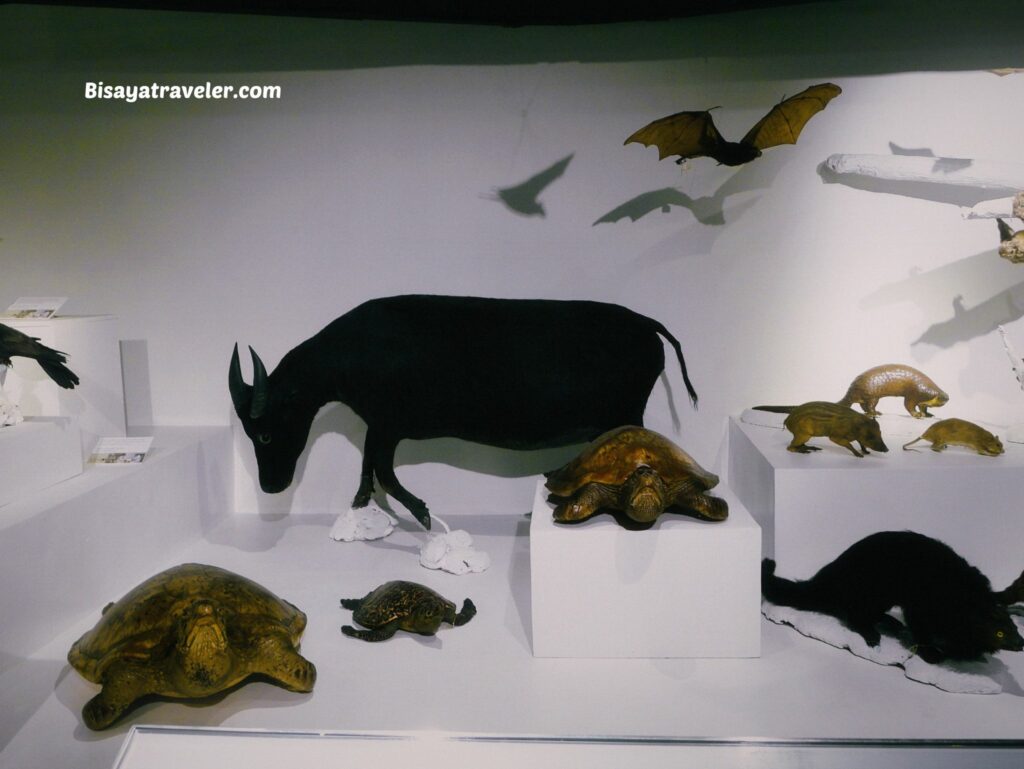
You start to remember that the world doesn’t revolve around you.
It never did.
In one gallery, I stood face to face with Lolong, the largest crocodile ever captured.
I stood in front of Lolong for a long time.
Not moving.
Not speaking.
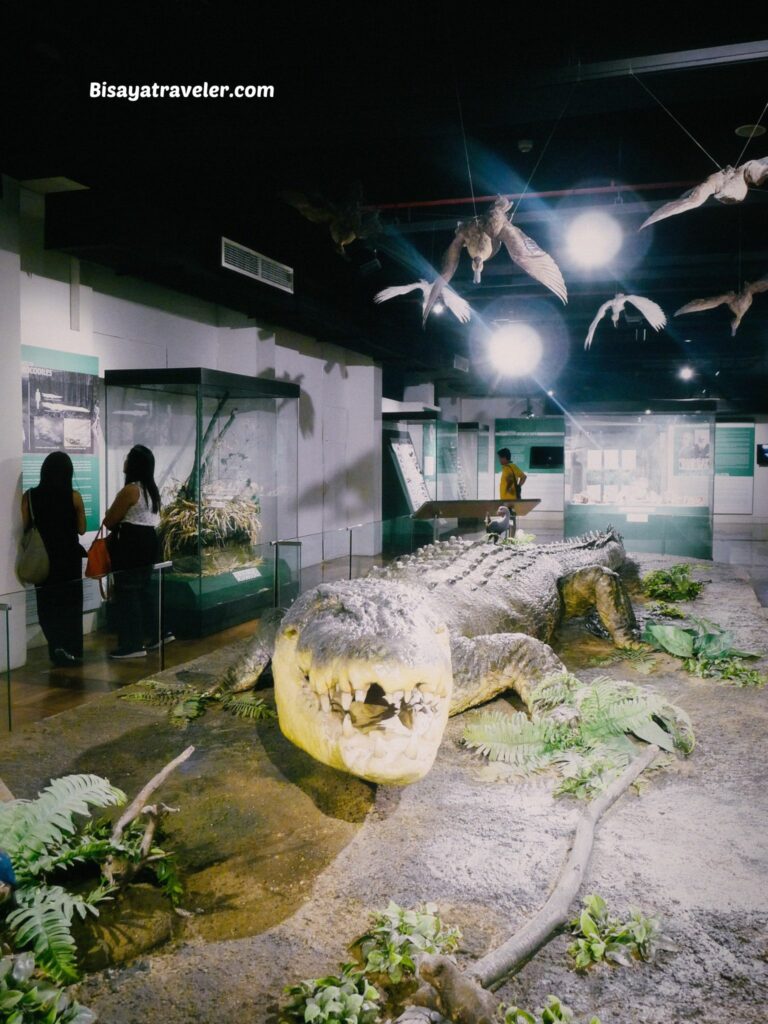
His massive, preserved form was both terrifying and humbling.
This wasn’t a monster from a storybook or a giant made by Marvel or DC comics.
This was a real creature that once breathed, lived, hunted, and died.
Now, he rests inside the National Museum of Natural History, frozen in time.
Perhaps Lolong and the other creatures on this floor were a warning or a reminder.
So many of the species featured here are endangered.
And some are already gone.
And the truth is, the more advanced we become, the more disconnected we are from the very nature we depend on.
We marvel at it only after it’s been cleaned up, labeled, and displayed.
But what did we do when it was out there, still alive and wild?
Did we do our best to protect it?
Did we exist with it harmoniously?
Honestly, we didn’t give a f*ck when they were around because we were too busy with our lives, thinking we were the center of the universe.
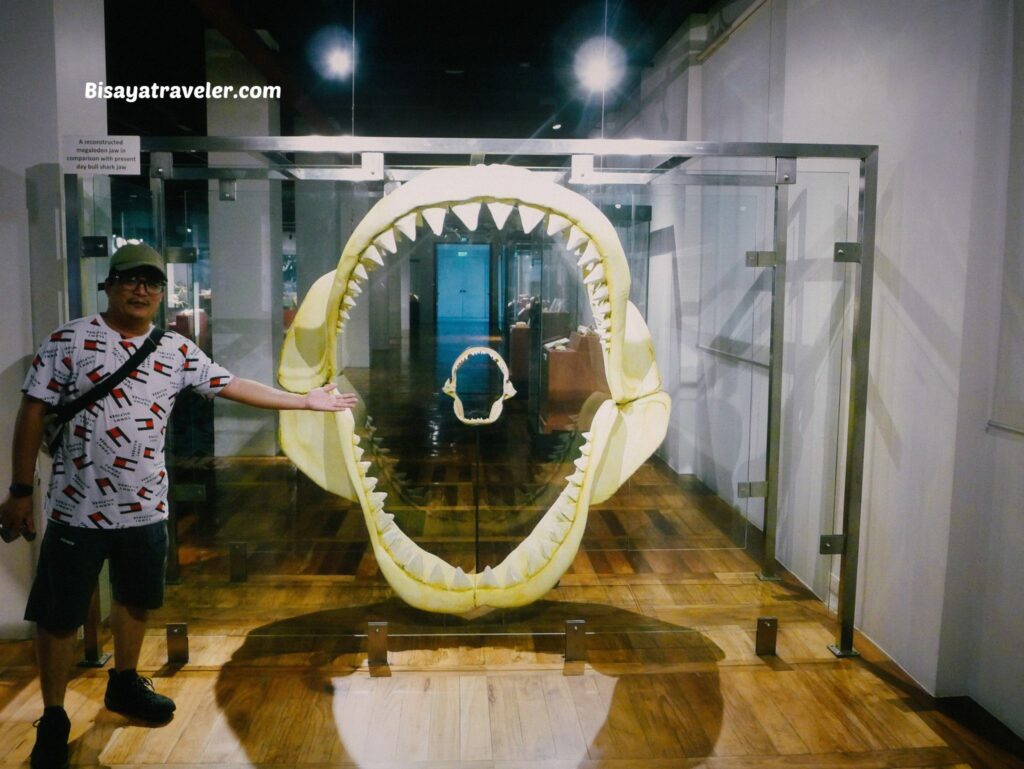
And here’s the thing.
Museums are more than just collections.
They are also mirrors that tell us hard truths.
They show us what we’ve discovered, what we’ve damaged, and what we’ve lost for good.
That’s what makes walking through these halls feel different now.
I used to walk through museums just to see “cool stuff.”
Now, it’s different.
As a kid, I saw curiosities.
As an adult, I see the consequences of human greed.
And I see that even though we’ve come this far, we still haven’t learned.
We make the same mistakes, just faster now.
We believe headlines without checking the source.
And we let videos, reels, and eight-second soundbites shape our opinions on things that deserve deeper thought.
Heck, even our politics is influenced more by trends than truth.
Ever wondered why the Philippines is still one of the world’s most corrupt nations?
Because in the world of algorithms, the loudest wins.
It’s not the wisest.
Not the most factual.
Just the loudest.
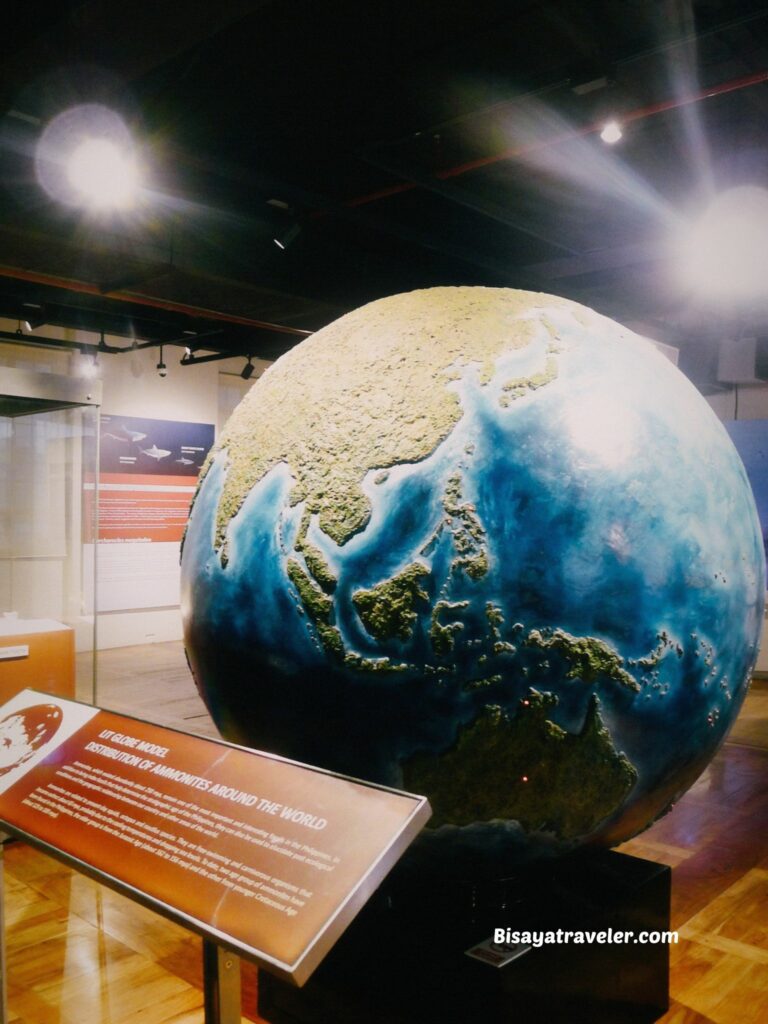
Museums, like the National Museum of Natural History, don’t play that game.
They don’t shout at you.
They don’t try to sell you anything.
They just stand there, silently holding truths that took decades to uncover.
And I guess that’s why they feel so uncomfortable sometimes.
Because museums won’t confirm our biases or flatter our egos.
They just show us the world as it was, and let us decide what to do with that knowledge.
And if we visited more museums and spent less time scrolling on our phones, we’d make fewer mistakes.
Or at least learn from the ones we already made.
The 4th Floor
Soon, we descended to the 4th floor of the National Museum of Natural History, where we saw a lot of familiar exhibits.
This was our domain, a floor dedicated mostly to forests and mountains in the Philippines.
There were mossy forests, karst forests, and plants I once saw clinging to cliffs.
Some displays looked exactly like the trails we’ve hiked, from the emerald mountains in Mindanao to the jagged peaks of the Cordilleras.
But on this floor at the National Museum of National History, behind glass, they felt like memories frozen in time.
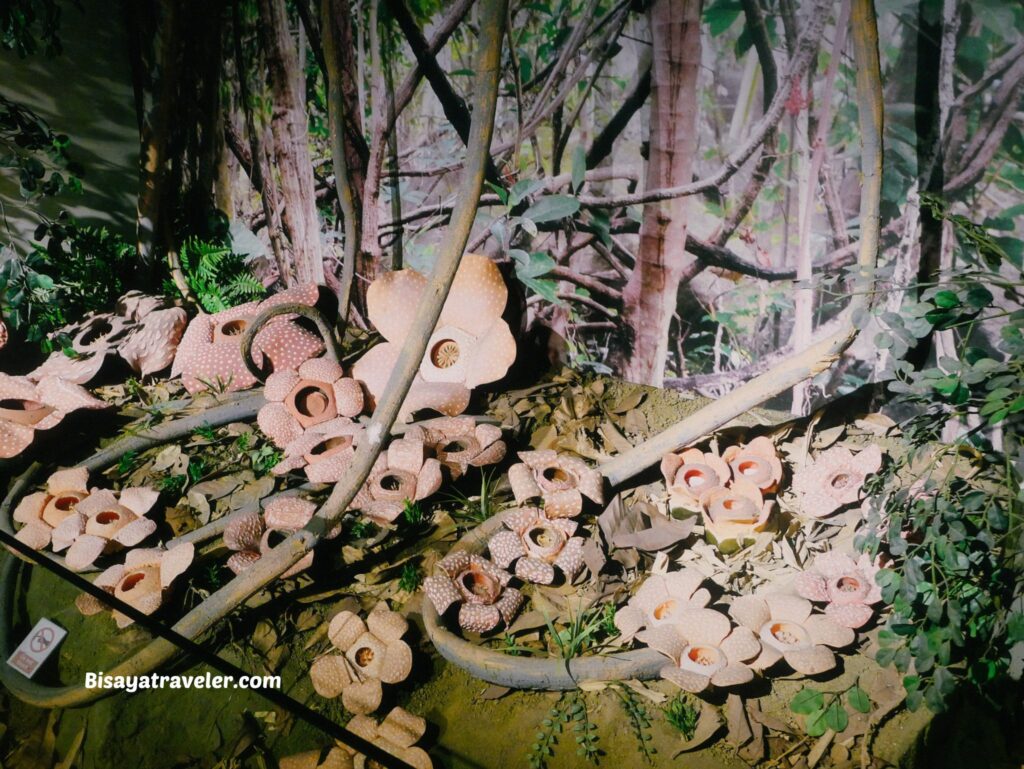
It was beautiful, but also bitterly disappointing.
Because out there, in their natural habitat, they were alive, breathing and fragile.
And inside this museum, they were already curated like relics of a vanishing world.
Then, something hit me.
We don’t lose nature in a grand, dramatic way.
We lose it silently.
One chainsaw, one land conversion, and one law passed with no one watching.
And how can I forget the subdivisions that have raped our ecosystems and mountains?
We scroll through forests disappearing, distracted by funny filters and bite-sized rage.
We repost slogans, but we don’t read.
We react, but we don’t remember.
We trust algorithms more than archives.
And so, we keep repeating the same mistakes.
It’s not because we don’t care.
But because we’ve forgotten how to slow down long enough to understand what we’re losing.
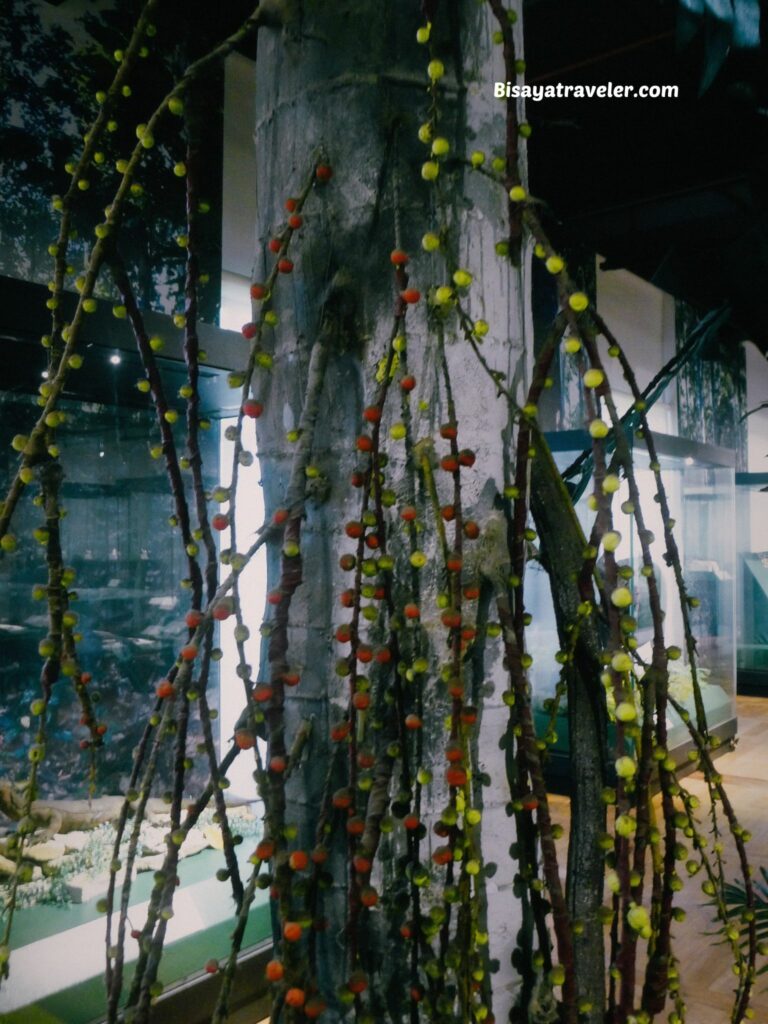
This floor wasn’t just about biodiversity and nature.
It was a wake-up call and a quiet reckoning because these displays aren’t just educational.
They’re evidence of what we’ve neglected, what we’ve destroyed, and what we’ll keep losing if we don’t start paying attention.
The truth is, museums don’t just preserve the past.
They confront us with it.
They hold up the receipts.
Museums like the National Museum Of Natural History force us to see what we’d rather ignore.
That our indifference has consequences and that silence, especially ours, is never neutral.
In a world where everything moves fast, museums ask us to stop, reflect, and be uncomfortable.
And if we’re brave enough, also to be accountable.
Because one day, if we don’t change, the only forests left won’t be the ones we can hike.
They’ll be the ones behind glass, under spotlights, silently asking why we didn’t fight harder to keep them alive.
The 3rd Floor of the National Museum of Natural History, Philippines
The third floor of the National Museum of Natural History felt like a documentary came to life.
This was one of my favorite parts of the National Museum Of Natural History because it reminded me of marine and coastal adventures I’ve done in real life.
Here, you don’t just read or look.
You walk through.
There’s a mangrove exhibit that wraps around you, thick with roots and mystery.
For a moment, you’re not inside the National Museum of Natural History.
You’re inside a swamp, surrounded by mudskippers, fiddler crabs, and the unseen life that anchors entire coastlines.
Then, in Gallery X of the National Museum Of Natural History, you’re pulled into something even deeper.
The Marine Realm.
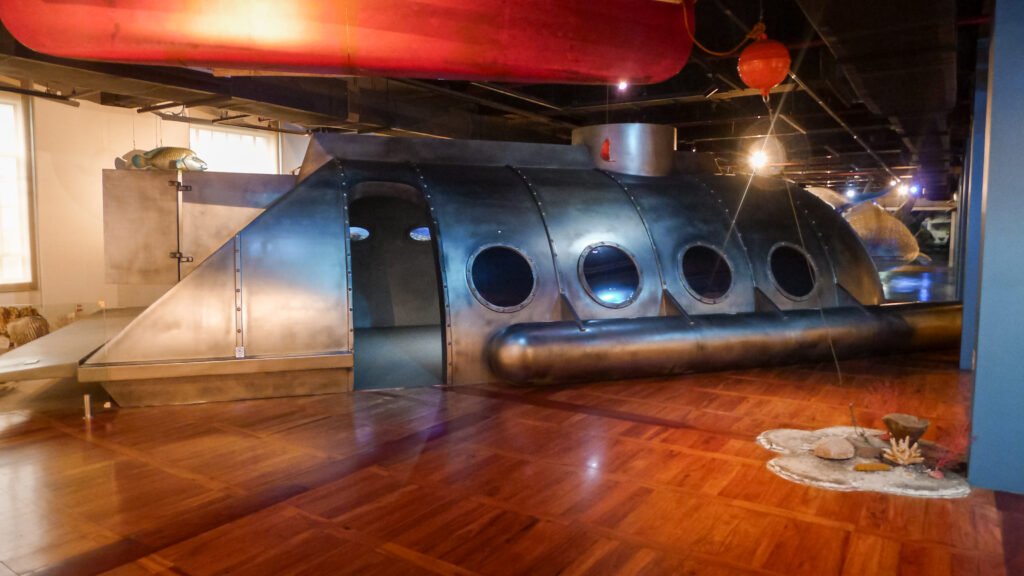
This zone lets you step inside a darkened space that looks like the deep sea.
There’s a “submarine” capsule, and it gives you a tiny sliver of what it might feel like to descend into The Abyss.
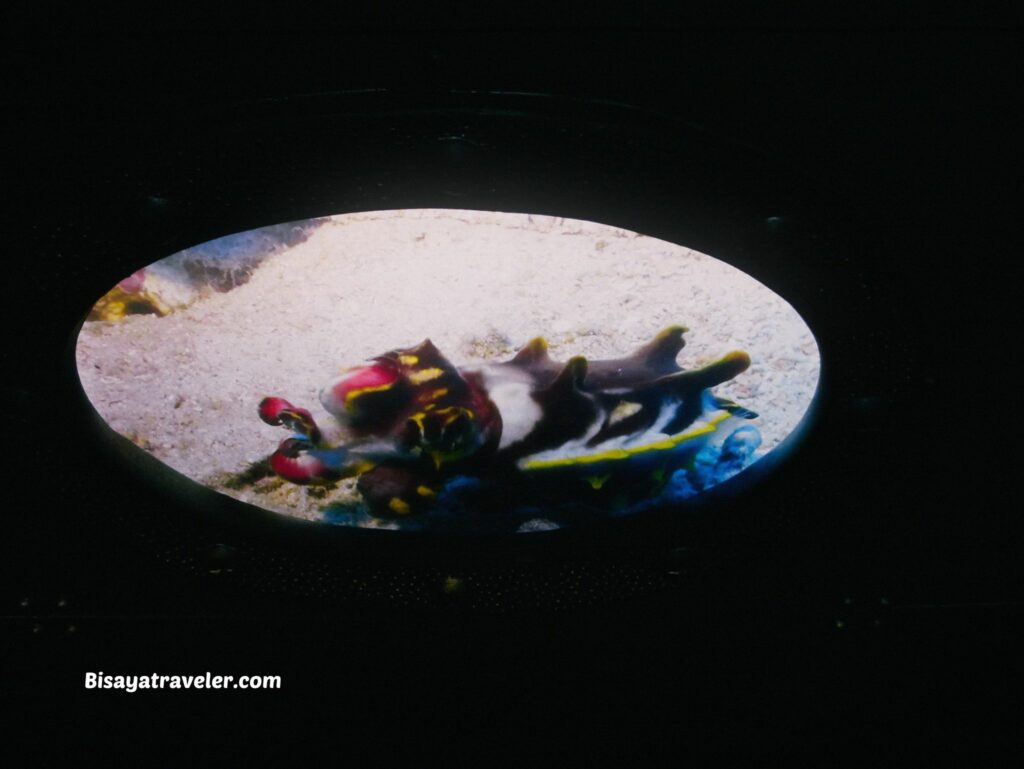
And there were also life-size models of several marine creatures.
These aren’t just.
They’re quiet warnings too.
Because the wonders of the deep, like the coral reefs, the gentle giants, and colorful fish, are slowly dying, too.
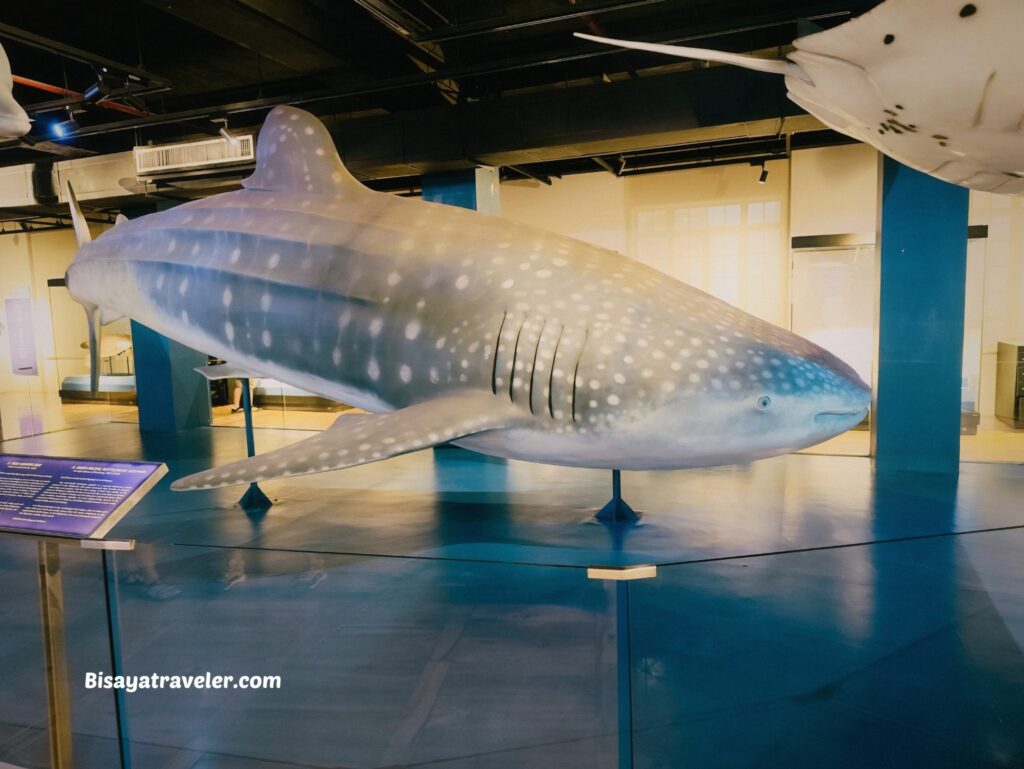
They have been bleached, choked, overfished, and ignored until they’re gone.
The beauty of this floor at the National Museum of Natural History is deceptive.
It somewhat feels peaceful and even calming.
But spend enough time reading the fine print, and it starts to hurt.
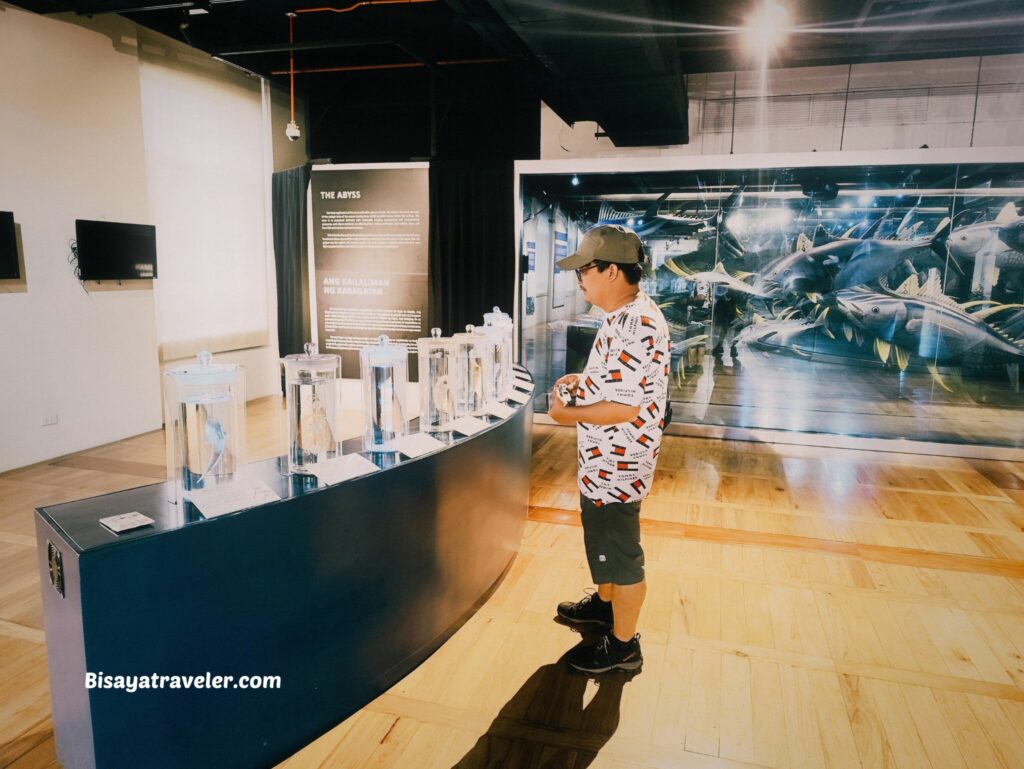
At this gallery, we’re once again looking at worlds we love, but don’t protect.
We’re seeing creatures we marvel at, but discard.
And admiring ecosystems we destroy, then try to reconstruct in miniature, inside museums like the National Museum of Natural History.
The 2nd Floor
On the second floor, we reached Gallery XI: Our Natural Inheritance, a space focused on climate change and the environmental issues that the Philippines has been facing for decades.
But this wasn’t just another exhibit.
It was a punch to the gut.
It’s the kind of gallery that doesn’t ask you to admire anything.
It asks you to explain yourself.
There were exhibits that didn’t need captions to feel urgent.
It was heavy because this wasn’t about some far-off crisis.
This was about home.
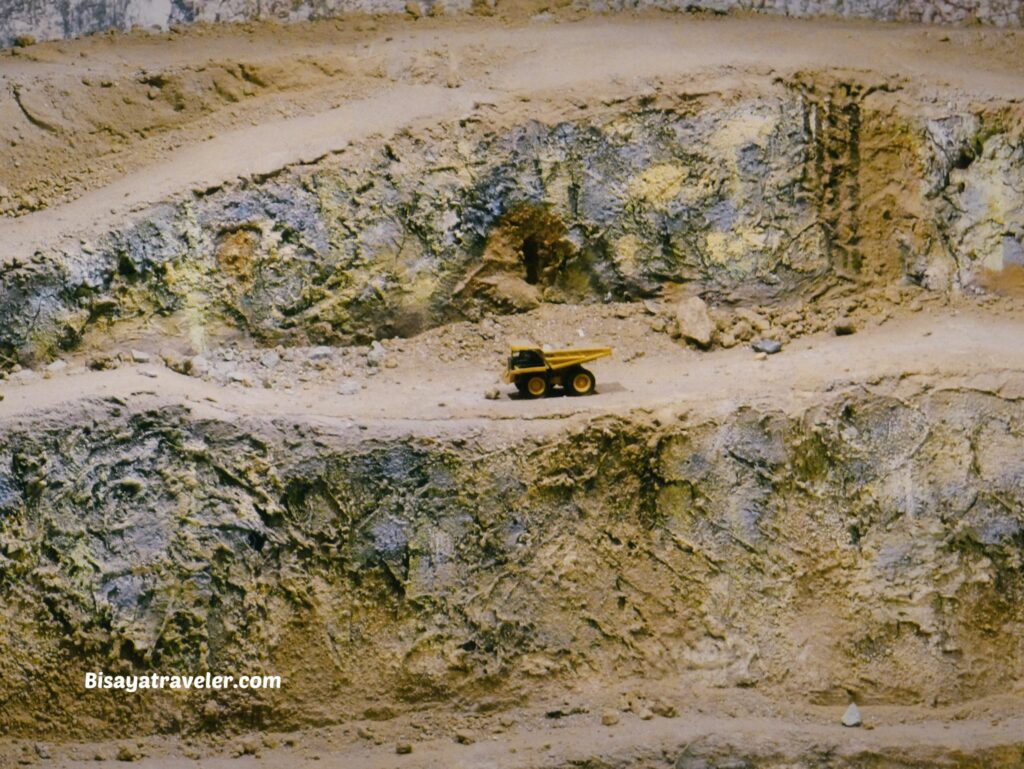
This was about us, our silence, our habits, and our blind spots.
And suddenly, the room felt like a courtroom.
Museums preserve the evidence.
Not the clickbait.
Not the noise.
Just the stuff we can’t explain away.
And that’s the part that stings.
Because deep down, we know we let it happen.
The 1st Floor of the National Museum Of Natural History, Philippines
Strangely, we didn’t spend much time on the first floor.
It was not because it wasn’t interesting, but because, by then, we were already full.
We were full of thoughts, emotions, lessons, and everything the upper floors made us feel.
We wandered around and peeked into a couple of rooms, but we didn’t linger.
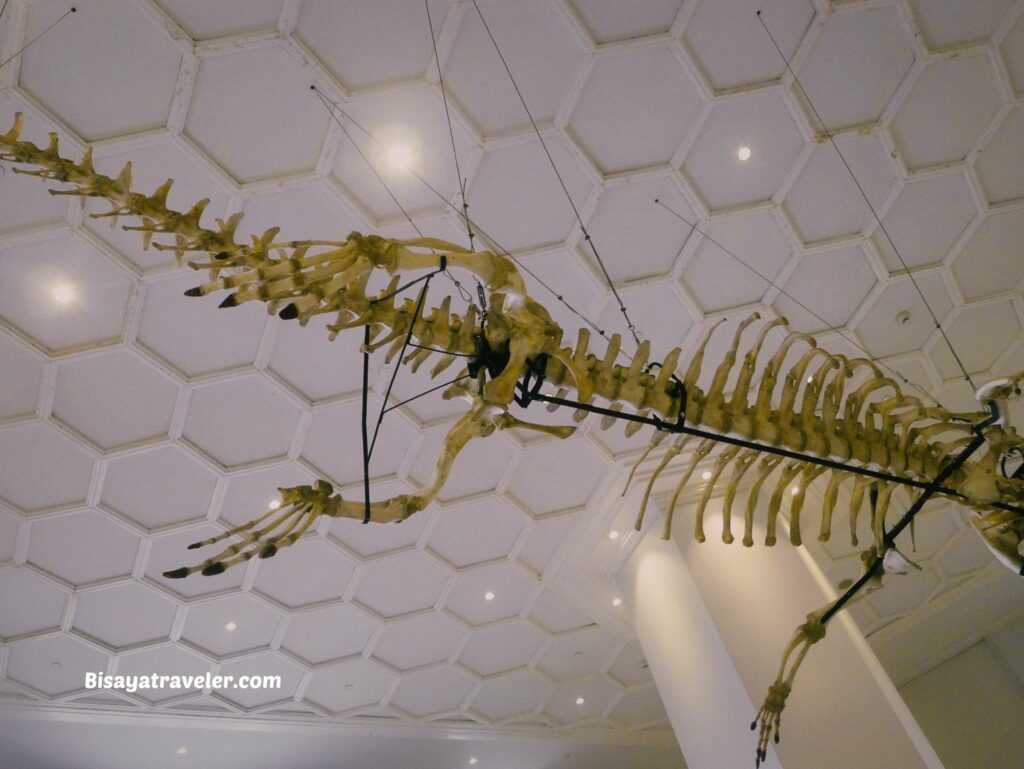
Sometimes, you don’t realize how much you’ve taken in until your brain quietly taps out.
And I think that’s what happened.
We didn’t see everything inside the National Museum of Natural History.
But we definitely saw enough.
We saw enough exhibits to realize that truth doesn’t need to go viral to matter.
And we found out that museums don’t exist to entertain us.
They exist to educate us, and hold us accountable.
And if we spent more time in places like this, we’d stop mistaking noise for wisdom.

We’d think longer, care harder, and scroll slower.
One day, the forests and reefs won’t need saving.
They’ll be gone, framed, labeled, and stuck behind glass.
Like the truths we ignored.
And like the museums, we never bothered to enter.
How to go to the National Museum of Natural History, Philippines?
If you’re taking the LRT-1, just hop off at United Nations Avenue Station. From there, it’s a short and easy walk to the National Museum Complex. If you’re driving, just pin “National Museum of Natural History Manila” on your navigation app and look for nearby parking around Luneta or along Kalaw Avenue.
Where is the National Museum of Natural History located?
The National Museum of Natural History is right in the heart of Manila, within Rizal Park (also known as Luneta). You’ll find it along Kalaw Avenue, close to landmarks like the Museum of Anthropology and the Museum of Fine Arts. It’s part of the National Museum Complex, so you can easily visit the other museums while you’re there.
How much is the entrance fee to the National Museum of the Philippines?
It’s completely free. There’s no entrance fee at all.
Can I wear shorts in the National Museum?
Yes, shorts are completely fine as long as they’re tastefully worn and not overly revealing. There’s no strict dress code at the National Museum of Natural History, Philippines.
Can I go to the National Museum of Natural History without booking?
Yes. For solo visitors and small groups, walk-ins are welcome without prior reservation. Just register at the entrance and enjoy exploring. But if you’re with a group of 20 or more, you must reserve in advance (at least three working days).


